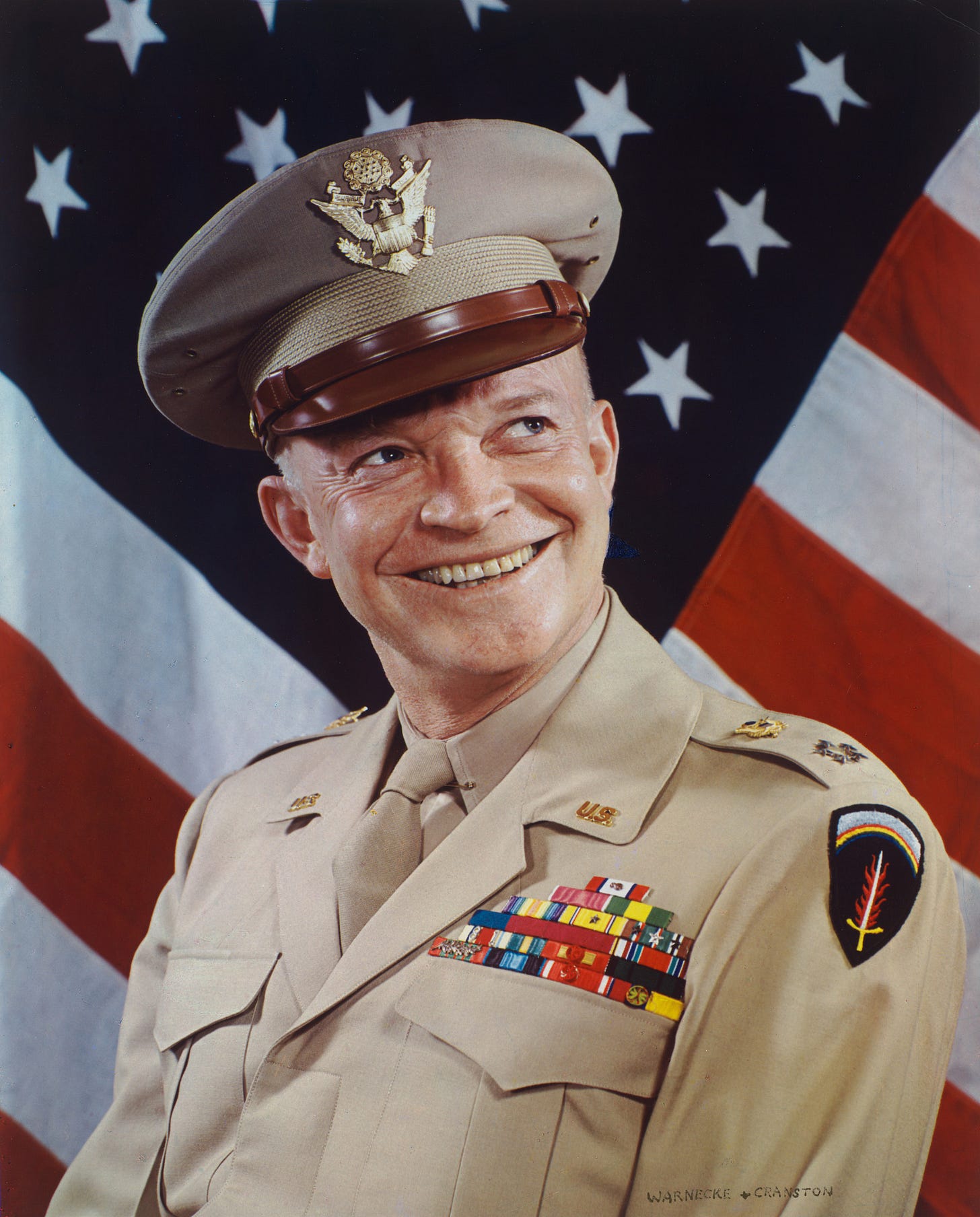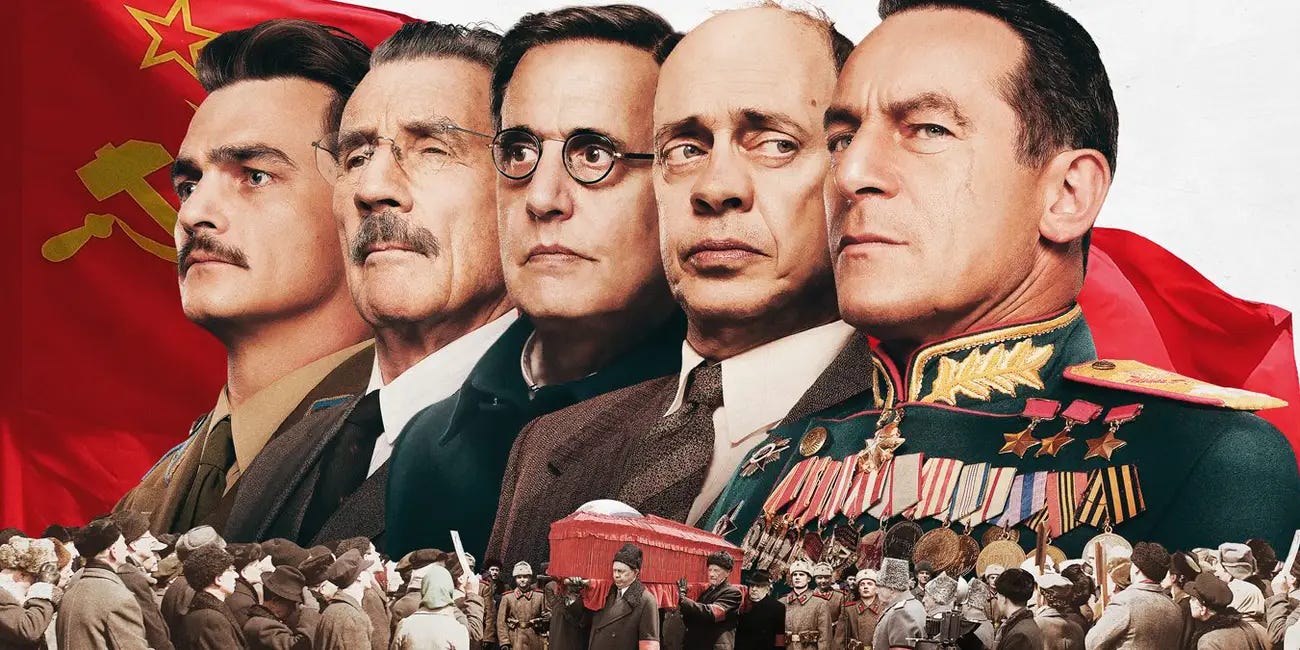The seventieth anniversary of Stalin’s death was this past Sunday — I toasted the old the old bastard’s demise — and it reminded me of a little story about Dwight Eisenhower and planning.
No, this story is not about Eisenhower’s famous planning aphorism that “plans are worthless but planning is everything.” (Eisenhower sometimes worded it differently and claimed it was an old Army expression, or something told him by an old soldier.) I love that saying. It captures the paradox at the heart of good planning: No matter how carefully calculated, our expectations and intentions will be knocked askew in this unpredictable world — but planning gives us a better grasp of a situation and thus improves our responses when, inevitably, reality catches us with a swift smack of surprise.
But no, this story is about Eisenhower and Stalin’s death.
Eisenhower knew Stalin from the war, of course, but Eisenhower had only been president for a little more than a month when the news of Stalin’s death broke. Everyone understood it was a watershed event. Stalin had ruled the Soviet Union with terror, brutality, and absolute control for a quarter century. In 1953, the United States and the Soviet Union, both armed with atom bombs, were superpowers locked in a strange sort of conflict that Bernard Baruch had christened a “Cold War” only six years earlier. Who would Stalin’s successor be? How would that change the Soviet Union? What did it mean for the United States? How should the United States respond? These were grave and urgent questions.
Fortunately, Stalin’s death was far from a surprise. In 1953, Stalin was 74. This was a septuagenarian born into poverty in 19th-century Georgia. As a young man, he had lived a hard life of armed robberies, arrests, and exiles. He had spent years angling for power in an environment where any slip could mean a bullet in the head. He had spent decades fearing assassination and coup and war while plotting to strengthen his iron grip. And he was a heavy smoker with atherosclerosis who had suffered a major heart attack in 1945. That Stalin could suddenly find himself in a coffin — whether by heart attack or stroke or lead poisoning — was as obvious to foreign analysts as it was to Stalin.
So when a stroke finally did Stalin in, it was a crisis, but it was a much-anticipated crisis. For years, the best and brightest in the American government had wrestled with what Stalin’s death would mean for the Soviet Union, the United States, the world. Now was the time to reap the fruits of all that labour.
Two days after Stalin’s death, Dwight Eisenhower sat down with his Cabinet.
As related in Ike’s Bluff by Evan Thomas, this is what he told them:
“For about seven years, ever since 1946, I know everybody who should be concerned with such things has been sounding off on what we should do when Stalin dies…. Well, he did — and we went to see what bright ideas were in the files of this government, what plans were laid. What we found was the result of seven years of yapping was exactly zero. We have no plan. We don’t even have agreement on what difference his death makes. It’s — well, it’s criminal, that’s all I can say.”
In How Big Things Get Done (yes, I’m turning this into a book pitch) Bent Flyvbjerg and I emphasize the importance of slowing the initial impulse to launch a project in a rush and instead engaging in rigorous planning. But we also note that what makes time-consuming planning worthwhile is not the time consumed. Planning done well takes time, so the time consumed is merely an indicator, not a cause, of good planning.
It’s an elementary point but an important one because people sometimes do mistake the sheer amount of time spent in planning as proof of a plan’s value. Look at all the meetings we held. All the talk. The voluminous documentation. Words, words, words! So many words! The plan is foolproof.
What this ignores is that it’s perfectly possible — even easy — to talk endlessly, churn out reams of paperwork, and find yourself with little or nothing of value.
Now, in Dwight Eisenhower’s honour, I have a name for this sort of “planning.”
I shall call it Seven Years of Yapping.
Please use the term often in your workplace. Just be sure to credit Ike.




Very interesting...I speak a lot with CEOs who tell me they don't have time to plan long-term, even though they think they should.
One of the many obstacles they cite is "how long it will take" to do long-term planning. They say this even when they have never seen a long-term plan for their business or engaged in such an exercise.
Their mistake? They extrapolate from short-term planning and imagine how hard that challenge is, so doing the same for the long-term must be exponentially more difficult and time consuming and costly...especially when outside consultants are engaged. Hence the 7 Years of Yapping, but no actual planning.
So it's another interpretation...perhaps that blocked the US Govt planners from completing a plan for Stalin's death. It's far easier to yap than it is to plan.
Great article!
Really interesting. All I plan for these days are my small home projects. I take forever to plan the work; to include everything. But, of course, it never works as planned. Still, I know the details so well I can usually bail myself out; especially if I have included a professional's number in my plans. Sorry to debase your article.